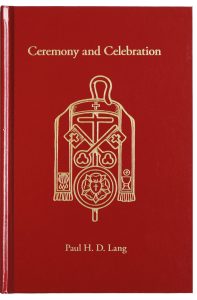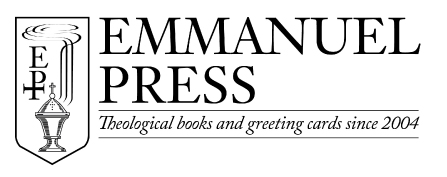 “Long before churches were built, the church’s worship was carried out at or around an altar. In Gen. 8:20 we read that ‘Noah builded an altar unto the Lord.’ Even before that, ‘Cain brought of the fruits of the ground an offering unto the Lord. And Abel brought of the firstlings of his flock and of the fat thereof’ (Gen. 4:3, 4). These sacrifices must have been offered on an altar. Therefore, the altar was the place of worship before there were church buildings, and the altar is more than an ornament or piece of furnishing in a church. It is a monument or object around which and in which the church’s worship is centered.
“Long before churches were built, the church’s worship was carried out at or around an altar. In Gen. 8:20 we read that ‘Noah builded an altar unto the Lord.’ Even before that, ‘Cain brought of the fruits of the ground an offering unto the Lord. And Abel brought of the firstlings of his flock and of the fat thereof’ (Gen. 4:3, 4). These sacrifices must have been offered on an altar. Therefore, the altar was the place of worship before there were church buildings, and the altar is more than an ornament or piece of furnishing in a church. It is a monument or object around which and in which the church’s worship is centered.
“We may regard the altar as: 1. the Lord’s table, 2. an emblem of sacrifice, and 3. a symbol of God’s presence.
“In one of its aspects the Holy Communion Service is a fellowship meal in which we are united with Christ and all fellow believers in a holy union or communion. As such it is celebrated at a table. This table is the altar, which for that reason is called the Lord’s table (1. Cor. 10:21).
“The altar is also an emblem of sacrifice. The word altar itself indicates this. It comes from the Latin altare ara, which means an elevated place for sacrifice. In the church’s worship the altar represents by association Christ’s sacrifice of Himself for the redemption of the world, and the place where the benefits of this sacrifice and all the blessings of God are conveyed to the believers. But the sacrificial aspect of the altar does not end there. It is the monument on which we offer in response to God’s mercy our sacrifices to God, that is, our sacrifices of prayer, praise, thanksgiving, and such material tokens of the offering of ourselves with all we are and have as money, bread, and wine.
“Thirdly, the altar is a symbol of God’s presence. It symbolizes the place where God and His people meet. Our Lord Himself refers to the altar as a symbol of God in Matt. 5:23 and 23:18-20. The altar stands for God as our flag stands for our country. That is why we direct our worship to the altar and reverence it by bowing, genuflecting, and kneeling. That is also the reason why the altar itself, and not any of its surroundings or ornaments, such as crucifixes, reredos, pulpit, or any other object, is in matter of location and all other considerations the focal point and center of the church’s worship and the church building.”
-Paul H.D. Lang in Ceremony and Celebration

